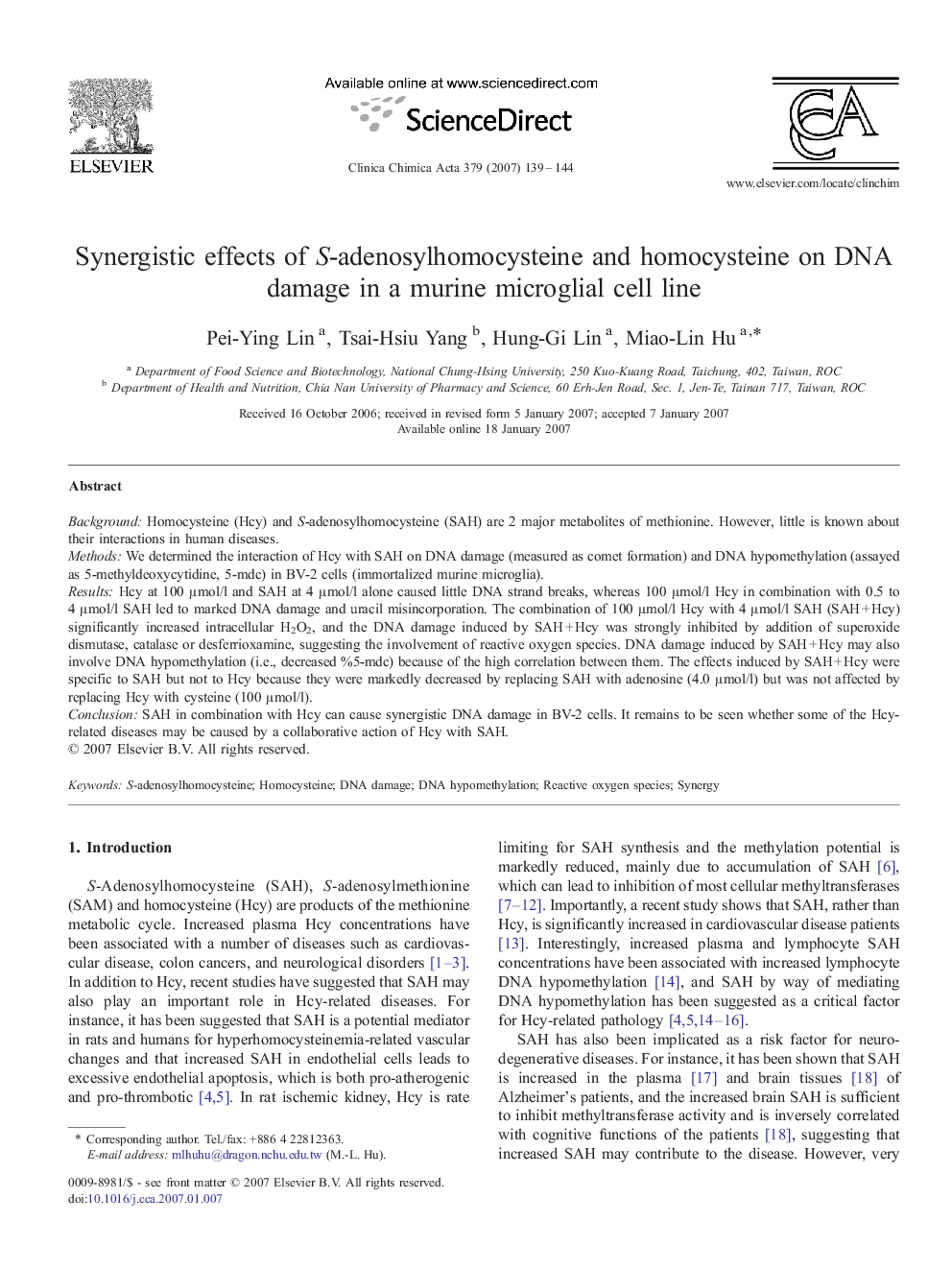| Article ID | Journal | Published Year | Pages | File Type |
|---|---|---|---|---|
| 1967790 | Clinica Chimica Acta | 2007 | 6 Pages |
BackgroundHomocysteine (Hcy) and S-adenosylhomocysteine (SAH) are 2 major metabolites of methionine. However, little is known about their interactions in human diseases.MethodsWe determined the interaction of Hcy with SAH on DNA damage (measured as comet formation) and DNA hypomethylation (assayed as 5-methyldeoxycytidine, 5-mdc) in BV-2 cells (immortalized murine microglia).ResultsHcy at 100 μmol/l and SAH at 4 μmol/l alone caused little DNA strand breaks, whereas 100 μmol/l Hcy in combination with 0.5 to 4 μmol/l SAH led to marked DNA damage and uracil misincorporation. The combination of 100 μmol/l Hcy with 4 μmol/l SAH (SAH + Hcy) significantly increased intracellular H2O2, and the DNA damage induced by SAH + Hcy was strongly inhibited by addition of superoxide dismutase, catalase or desferrioxamine, suggesting the involvement of reactive oxygen species. DNA damage induced by SAH + Hcy may also involve DNA hypomethylation (i.e., decreased %5-mdc) because of the high correlation between them. The effects induced by SAH + Hcy were specific to SAH but not to Hcy because they were markedly decreased by replacing SAH with adenosine (4.0 μmol/l) but was not affected by replacing Hcy with cysteine (100 μmol/l).ConclusionSAH in combination with Hcy can cause synergistic DNA damage in BV-2 cells. It remains to be seen whether some of the Hcy-related diseases may be caused by a collaborative action of Hcy with SAH.
